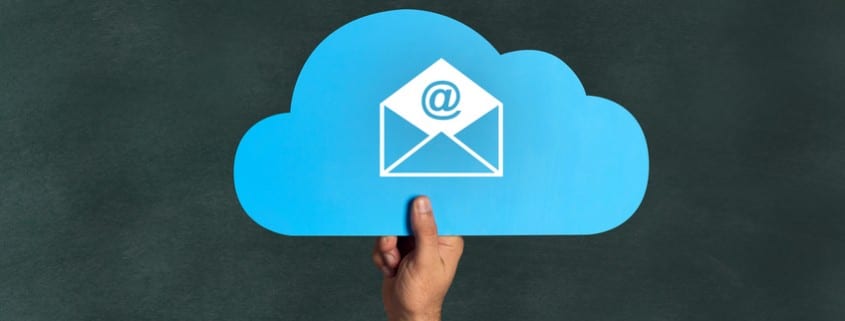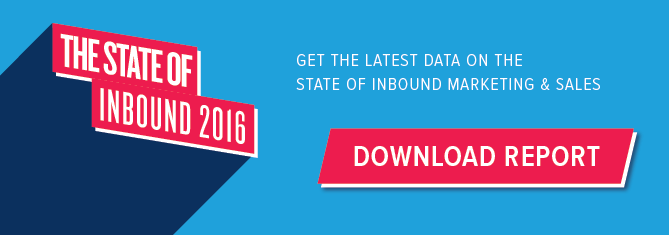
Why People Unsubscribe From Your Emails, And What To Do About It
Emails are an important part of any b2b marketing program, and are still one of the best ways to get your content in front of prospects and leads. In fact, according to HubSpot’s State of Inbound 2016 report, 29 percent of salespeople said that email is their most effective channel for connecting with prospects. One area where marketers often struggle with their email marketing campaigns is failing to retain their subscribers. Here are five reasons people commonly unsubscribe from your emails and a few tactics for keeping them on your list and engaging with your brand.
- Too Many Emails
The number one reason people unsubscribe from an email list is because they’re receiving too many emails. 78 percent of people unsubscribe for that exact reason, according to the HubSpot Global Interruptive Ads Survey Q4 2015.
This can be a problem for marketers, because there is no general rule for email frequency. The correct number of emails you should send per month varies depending on your industry and your specific audience.
It is important to do some A/B testing to determine the rate that works best for your audience and leads to the most opens, clicks and engagement.
Remember, the Inbound Methodology is about getting the right content to the right people at the right time. Test and determine the best frequency so your emails will continue to help move people through the Buyer’s Journey and generate new leads for your brand.
- Topics Not Aligned With Interests
People sign up for a newsletter because they believe the sender has valuable information to share. If people aren’t learning from your emails, or the content is irrelevant to them, they will likely unsubscribe.
In fact, 66 percent of global consumers said they unsubscribe because the email topics “weren’t aligned with my interests,” according to the HubSpot survey.
This is why it is important to develop clear personas. You need to understand your audience and their interests, so that you can continually provide content that is helpful and relevant to them. Segment your lists around your personas and design emails that specifically appeal to the interests of each persona. This way, your emails will feel more personal and your readers will continue to open your emails and look to your brand as a source of helpful information.
Not generating enough leads? Download our guide to the Inbound Marketing Methodology.
- Didn’t Sign Up For Emails
49 percent of consumers unsubscribe from an email list because they never actually signed up for the list in the first place.
To avoid this problem, you should build your list organically and only send emails to those who have expressly given permission for you to send them emails.
It is also important to create clear sign-up forms so that users know exactly what it is they are signing up for. It is not uncommon for users to sign up for what they think will be a one-off email, containing a white paper or another piece of content, and then end up on the company’s weekly email list because the forms were unclear.
Clearly indicate to customers that they are signing up for an email list and provide an opt-in checkbox, allow them to choose the email frequency, or select the topics they would like to learn more about, so that the people who end up on your lists are those who are actually interested in receiving your emails.
- Emails Not Loading Correctly
In 2016, mobile-friendly design is no longer just a recommendation. It is essential that your emails display correctly across all devices. Nearly 68 percent of emails are opened on mobile devices, with 52 percent of those occurring on smart phones, according to Movable Ink’s US Consumer Device Preference Report.
Furthermore, 71.6 percent of consumers will delete emails if they don’t look good on mobile, according to Adestra’s 2016 Consumer Adoption & Usage Study. And 45 percent of consumers have unsubscribed from an email list because the emails or website did not display properly on their smartphone, according to Litmus Software’s 2016 Mobile-Frienly Email & Landing Page Trends.
But it is not enough to simply have a mobile-friendly or responsive design, it is important to test and preview your emails across a range of browsers and devices to make sure that everyone who opens one of your emails will be able to read them and ultimately move on to complete your call to action.
- Information Overload
The average reader only spends 51 seconds looking over a newsletter. Therefore, you need to carefully plan and organize every piece of content that goes into your email.
People want emails that are clear, concise and easy to read quickly. So don’t confuse them. Options create friction. The more choices you give people, the less likely they are to make a decision. Adding in more information or multiple offers will not lead to better engagement.
Each email should have one clear topic and one clear CTA. Everything from the subject line that interested them enough to open the email, to the images, and the content should encourage readers to complete your email’s one objective. Keeping your emails clear and not overloaded with information will help keep your readers coming back for more.
Want to learn more about email marketing, blogging, social media, and everything else Inbound Marketing? Download the State of Inbound 2016 from HubSpot.


The landscape of the Internet is ever changing and Nicole has the energy and aptitude to keep Stevens & Tate Marketing out in front of the pack. She leads an enthusiastic team in strategic planning, development, search engine marketing, online promotions and advertising for the web.




